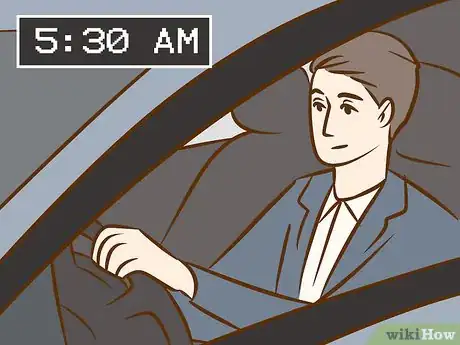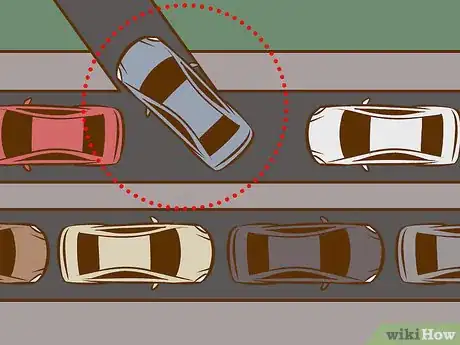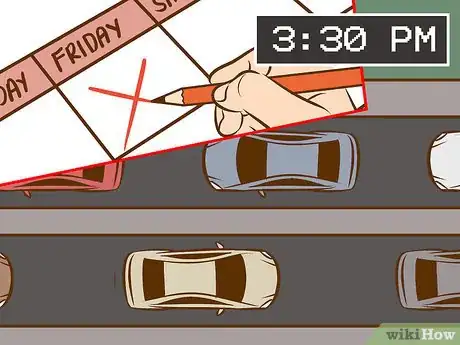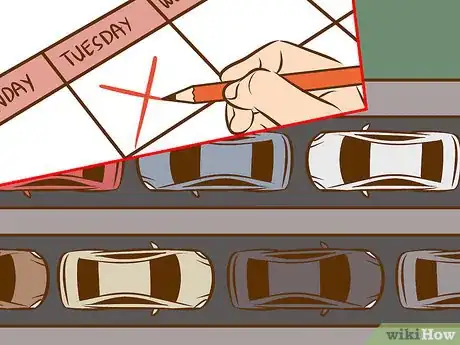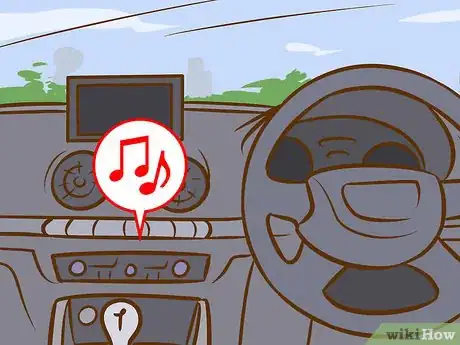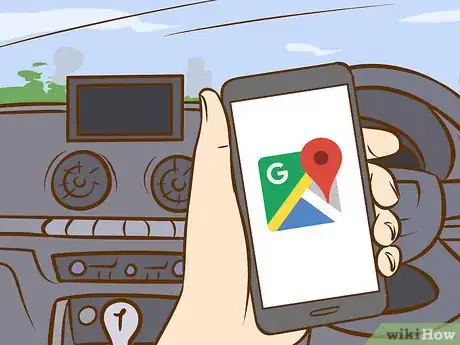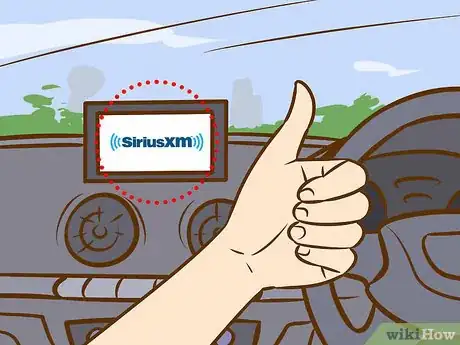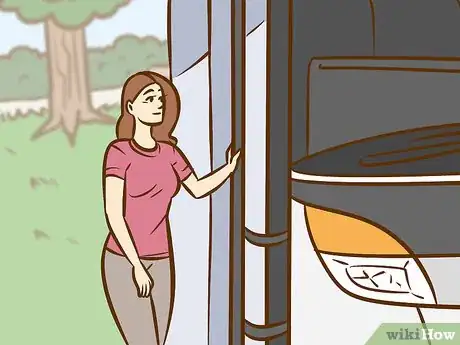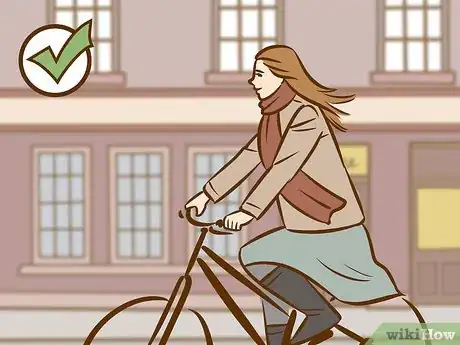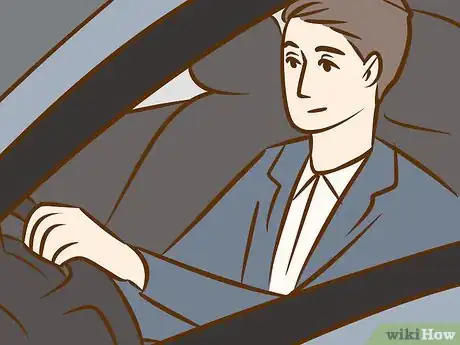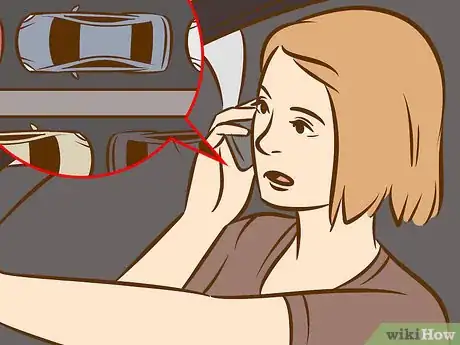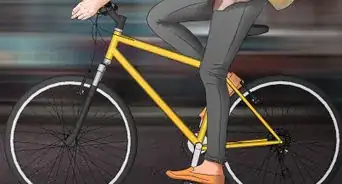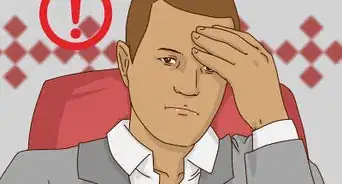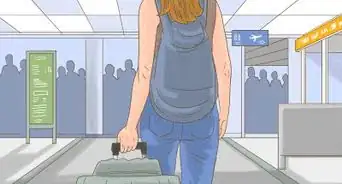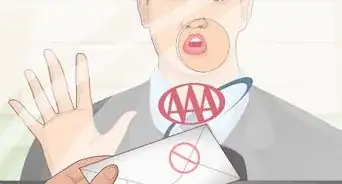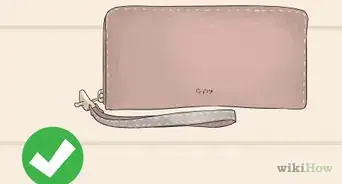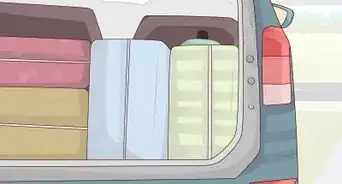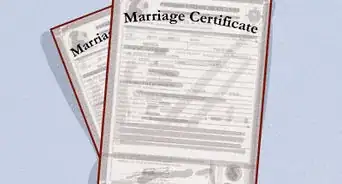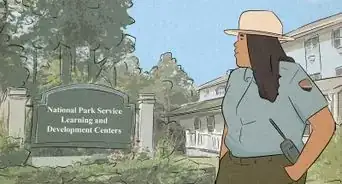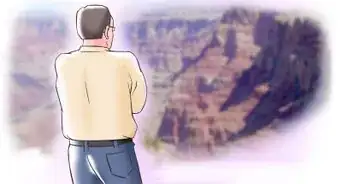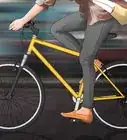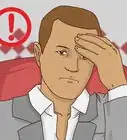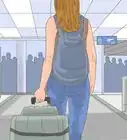This article was co-authored by wikiHow Staff. Our trained team of editors and researchers validate articles for accuracy and comprehensiveness. wikiHow's Content Management Team carefully monitors the work from our editorial staff to ensure that each article is backed by trusted research and meets our high quality standards.
This article has been viewed 216,539 times.
Learn more...
As with any large city, the traffic in Washington, D.C. can be a nightmare, particularly during rush hours. Whether you're working in the city or just visiting, it's natural to want to know how to avoid traffic around Washington, D.C. Plan your trips ahead of time, preparing yourself for delays and traffic jams. Use technology, like GPS devices and mobile apps, to figure out the fastest routes. If you end up stuck in traffic, stay calm and work through the situation.
Steps
Planning Your Travels
-
1Change the time you're driving. Sometimes, a simple change of time can affect the difficulty of your morning commute. Try to leave before or after rush hour to avoid traffic and cut down on driving time.[1]
- Usually, the morning commute is difficult in major cities. Therefore, opt to leave an hour earlier than usual. It may take awhile to adjust to the change in your sleeping patterns, but it will be worth it to make it work on time and avoid the rush. Coming out of your neighborhood, a change of 15 minutes in your departure time may make a huge difference in your commute.
- You should also plan to avoid rush hour. As many people tend to get off work around 5, you can expect a lot of traffic from 5 to 6. If you want to make evening plans, plan to make them for later at night to avoid getting stuck in rush hour. In Washington, an enormous number of people work for the Federal government. The Feds have Flex Time and some folks who get in extra early may be leaving at 2:30 or 3:00. Rush hour starts earlier and ends later. Construction workers also start early and leave early as well. This could be a local or neighborhood problem.
-
2Try alternative routes. Popular highways, like I-95 and I-70, may be packed during certain times of the day in DC. Instead of going on those highways, there are alternative routes you can take that may get you to your destinationfaster. Be flexible. Use several alternates as more people are using alternative routes.[2]
- Many people must drive from I-270 to I-70 west to I-68 west to catch one of the exits on I-68. As traffic can get bad here, instead try to take Route 44 and Alternate 40. This should get you in roughly the same area, and much of the road is historically preserved. Not only is there less traffic, you'll get a good view as you drive.
- If you're trying to get to DC's Chesapeake Expressway/I-464/Route 17, there is an alternative route you can take instead of going through major highways. Try taking route 17 south at Exit 126 and take it to I-64. This will keep you from the major highway congestion.
- You can also try taking main roads over the highways on days where traffic is particularly congested.
Advertisement -
3Leave early or late on Fridays. On Fridays, the roads will be particularly packed as drivers are getting off work. People who commute from the suburbs may clog the highway after work. From 5 to 6PM, it's a bad idea to take any major highways in DC. If you do need to meet someone around 6 or 7 on a Friday, take public transportation or choose a route that does not require driving on the highways. Better yet, leave late on a Thursday. Around major holidays, people arrange their schedule to leave earlier and earlier. If you're up to it, late night driving can be the best although you may have to contend with folks who are leaving the bars to go home.
-
4Be prepared for delays on Tuesday mornings. In major cities, like LA, New York, and DC, Tuesday morning commutes tend to be the worst. Therefore, leave earlier than usual on Tuesdays for work or other obligations. You should also strive to stay off major highways if possible on Tuesdays. You may find that the heaviest traffic may occur on other days for your route or neighborhood. Federal flex time and working at home helps the traffic somewhat but unless more businesses allow working from home, the situation will continue to worsen.[3]
Using Technology
-
1Listen to traffic updates on the radio. Sometimes, traffic patterns are unpredictable. While things like rush hour and morning traffic have some pattern, things like accidents and construction can delay traffic in unexpected ways. It's a good idea to tune to a traffic radio station in your area.[4]
- WTOP in DC offers traffic reports and updates on accidents and construction. You can tune into their radio station while driving, and you can also quickly check the website's traffic section before going out the door in the morning.[5]
- In the event unusual circumstances, like a car accident, are delaying traffic, you'll be able to quickly plan an alternative route to avoid traffic. Be attentive to special events - sports games, political events - even the smallest of protests can have a major effect on traffic. Waze. Waze is a smart phone application that alerts you to traffic build ups. It can reroute your journey in the event that bad traffic will cause you delays.
- Waze usually alerts you where a traffic buildup is located. It also marks unusual traffic by placing red bands over patches of highway that are congested by cars. It will then tell you how much the delay will be, and offer you an alternative route if necessary.
- In addition to alerting you about traffic, Waze can also know where you're likely to find police officers en route. This can help you avoid speed traps and tickets.
-
2Check Google Maps. Google Maps also provides time estimates based on traffic. Usually, when you punch in your destination, Google Maps offers several different routes. The time estimates for this route are based on the current traffic. Using Google Maps, you can see where you're likely to encounter traffic and adjust your trip accordingly.
-
3Sirius/XM Radio have stations dedicated to traffic reports in some major cities. You won't have to wait for "Traffic on the fives."
Trying Alternative Travel Options
-
1Consider opting for public transportation. In DC, there are metros that may be faster than driving on some days. Metros run on a train line, so they will not be affected by traffic delays. You can look up metro routes online, or find routes using GPS apps like Google Maps. If a metro can get you to your destination quicker than driving, you may want to opt for public transportation that day. Update: For Metro bus, this may be true although I've never found the bus any faster. Due to safety concerns, Metrorail is and will become a mess as repair work will continue throughout the next year. And the fares and parking at stations have increased to the point where it is certainly cheaper to drive. Even with traffic, using the train may not save any time at all. Experiment. Be flexible. Your mileage my vary. [6]
- In addition to saving you time, taking the metro can also save you money. You'll only pay a small fee to board, and you'll end up stocking up on gas less often.
- You can also try taking a bus, but keep in mind busses will generally be as affected by traffic as cars.
-
2Walk, if it's a short distance. If you can manage to walk, this may be quicker. You will be able to use sidewalks, which are unclogged by cars. If the distance is reasonable, and you're a seasoned walker, it may be quicker to walk most days.
- DC can be a high stress city. In addition to saving you time, getting in some walking regularly can help you manage stress.
- If you're not in shape, take it slow. Do not start walking 2 miles (3.2 km) to and from work every day. Spend a week or so taking small walks around your neighborhood before attempting to walk to work instead of driving.
-
3Invest in a bike. Washington DC is home to a lot of bike trails. If you enjoy biking, see if a bike trail can take you reasonably close to where you need to be. If you can make it by bicycle, this may sometimes be quicker than driving due to traffic. Much like walking, biking is a form of exercise, so it can reduce stress as well.
- Be careful when biking in or near the street. You should always wear a helmet and other protective gear.
- Check out Capital Bikeshare. For local, in town trips, this may be a great option if bike stations are close by. Be extra careful of the cars though. Full of frustrated drivers. Obey all traffic laws. Blowing through a red light or stop sign will easily get you a trip to the hospital and a traffic ticket. Please stay safe! Wear a helmet. A reflective vest would be a great idea.
Dealing with Traffic
-
1Remain calm. Even with proper planning, everyone gets caught in traffic on occasion. In a big city like DC, a delay due to traffic is inevitable. In the event you're caught in traffic, remain calm. Getting upset or anxious will only make the situation worse.
- Try to take a few deep, calming breaths. When driving, you want to be relaxed enough to focus on the road. Stress or anger over traffic can cause anger.
- Find a way to take your mind off the situation. Play a song you like or a podcast over the car's radio. Listen to a book on tape. Turn on the radio and find a calm, relaxing station. Resist the temptation to text, email or play games on your phone. Remember, hands free calling only. It's the law.
-
2Keep pace with the other cars. You do not want to make a traffic jam worse for yourself or other cars. Maintain an equal distance between the car behind you and the car ahead. Make sure to drive at the same speed as the cars behind you. Try not to accelerate to catch up to the car behind you, as this may force other drivers to slow down suddenly. This will make the traffic jam worse.[7]
-
3Let people know if you'll be running late due to traffic. Traffic delays among the most common reasons for tardiness in urban areas. If you're going to be late, call and let people know ahead of time. Be careful when dialing a number when driving, however, Make sure to wait until cars are paused on the highway.
- Do not make tardiness due to traffic a habit. While it's understandable that this will happen on occasion, at a certain point your boss or your associates will expect you to work around traffic delays.
Community Q&A
-
QuestionWhat time is rush hour in Washington, D.C.?
 Community AnswerIn the Washington, D.C. area, traffic is unpredictable. Rush hour is Monday through Friday, from 6 a.m. to 9:30 a.m., and 3:30 p.m. to 6:30 p.m.
Community AnswerIn the Washington, D.C. area, traffic is unpredictable. Rush hour is Monday through Friday, from 6 a.m. to 9:30 a.m., and 3:30 p.m. to 6:30 p.m. -
QuestionWhat is weekend traffic like in Washington D.C.?
 Community AnswerDowntown near the monuments and landmarks will be a little rough but livable, with some roads potentially shut down if there is a parade or demonstration going on. However, the rest of the city is pretty painless until late Sunday afternoon (a lot of people in DC are transplants and go back to family, and many locals like to get out if there are big events going on)- when everyone is starting to come back.
Community AnswerDowntown near the monuments and landmarks will be a little rough but livable, with some roads potentially shut down if there is a parade or demonstration going on. However, the rest of the city is pretty painless until late Sunday afternoon (a lot of people in DC are transplants and go back to family, and many locals like to get out if there are big events going on)- when everyone is starting to come back.
References
- ↑ http://www.citylab.com/commute/2012/05/how-avoid-worst-traffic-jams-most-congested-us-cities/2077/
- ↑ https://www.washingtonpost.com/news/dr-gridlock/wp/2015/05/15/its-summer-travel-season-heres-how-to-avoid-highway-headaches/
- ↑ http://www.citylab.com/commute/2012/05/how-avoid-worst-traffic-jams-most-congested-us-cities/2077/
- ↑ http://www.mapon.com/en/blog/2015/04/8-tips-to-help-you-avoid-traffic-jams
- ↑ http://wtop.com/traffic/
- ↑ http://www.mapon.com/en/blog/2015/04/8-tips-to-help-you-avoid-traffic-jams
- ↑ http://www.popsci.com/article/cars/how-avoid-traffic-jams
About This Article
Since the traffic around Washington, D.C. can be a nightmare, plan your trip to avoid rush hour if possible and use technology to find the fastest routes. Leaving for work an hour earlier than usual can help you avoid morning rush hour, but sometimes altering your departure time by as little as 15 minutes can make a huge difference, so try to be flexible to find the fastest times to travel. Additionally, try alternative routes to popular highways, like taking Route 44 and Alternate 40 instead of I-68. Technology can also help you find the fastest routes, so tune in to radio traffic reports for updates on accidents and construction. You can also use the WAZE app on your smartphone to get alerts about traffic and to help you reroute your drive. To learn how to use alternative modes of transportation to avoid D.C. traffic, keep reading!
